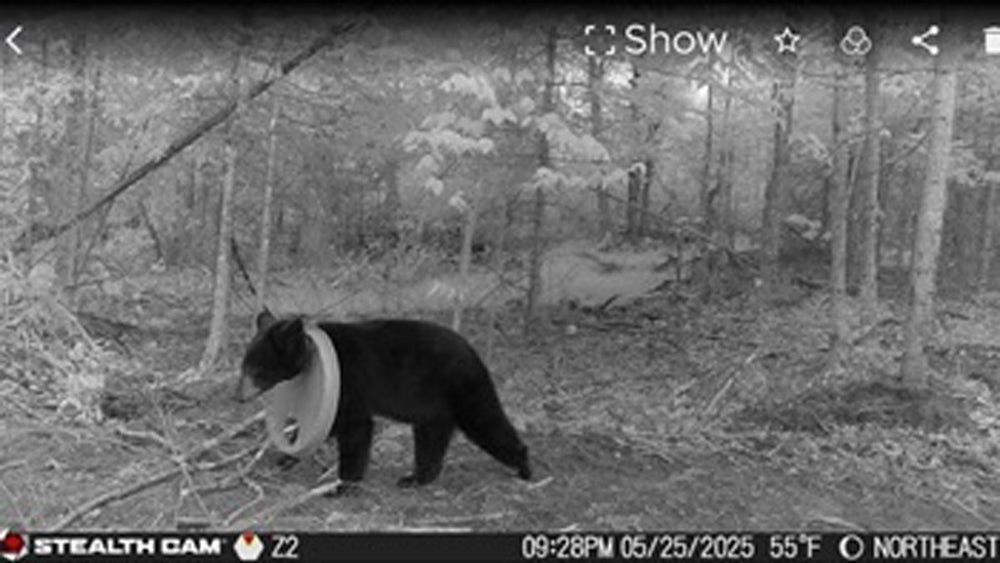More than a decade ago, California outlawed the use of dogs to chase black bears. The practice, known as hounding, was condemned for its cruelty and unfair advantage for hunters. Now, Assembly Bill 1038 seeks to bring it back, allowing hounds to pursue bears during a newly proposed “pursuit season.” Supporters claim the measure would help curb rising conflicts between people and bears, while critics warn it could devastate wildlife and worsen the problem.
Assemblymember Heather Hadwick, who represents rural communities in the state’s northeast, argues that California’s bear population has grown “out of control” and poses a threat to human safety. She points to the state’s first recorded fatal black bear attack in 2023 as justification for reintroducing hounds into bear management, the Mercury News reports.

Hounding bears was banned in California in 2012.
Conflict or Coexistence
California’s only bear species is the black bear, which thrives across the Sierra Nevada, coastal ranges, and foothills. While their population was once estimated at around 35,000, updated methods suggest closer to 65,000 — though experts caution that these figures are imprecise.
Wildlife strategist Wendy Keefover notes that apex predators reproduce slowly and live at low densities, making sweeping claims about explosive population growth unreliable, he told the Los Angeles Times.
The spike in human-bear encounters, particularly in Lake Tahoe and Southern California’s foothills, stems not from more bears but from more people moving into and vacationing within bear habitat. Between 2017 and 2020, the state logged an average of 674 bear-related reports annually. That figure more than doubled to 1,678 during 2021 and 2022. Bears have learned to take advantage of easy food sources — trash cans, bird feeders, outdoor pet food, and even unlatched car doors.

A new bill seeks to bring back hounding through a “pursuit season.”
Why Hounding Doesn’t Work
Proponents of AB 1038 frame hounding as a form of hazing meant to restore bears’ fear of humans. But animal welfare advocates counter that chasing random bears deep in the forest has nothing to do with the actual conflicts unfolding near homes and campsites.
Ann Bryant, executive director of the Tahoe-based Bear League, told SFGATE that unleashing hounds will not teach bears to avoid people. Instead, it risks driving them closer to human settlements.
The cruelty is another central issue. Bears often run for miles until cornered or forced up trees. Exhaustion, injury, or violent clashes with packs of dogs can result. In past seasons before the ban, bears chased into trees became easy targets for hunters waiting below. As ABC7 News reports, critics warn the new bill blurs the line between non-lethal hazing and a return to full-scale hunting.

Black bears are the only bear species left in California.
The Better Solutions
Experts insist that coexistence tools are far more effective than reintroducing hounds. Securing garbage, installing electric fencing around livestock enclosures, and removing food temptations from yards and campsites prevent most conflicts. Motion-activated lights, alarms, and even “unwelcome mats” that deliver a mild shock deter curious bears without cruelty.
Bryant stresses that real hazing should be immediate and situational — stomping feet, shouting, or scaring a bear away from trash at the moment it misbehaves. Pursuing them through wilderness with dogs, she explains, is not hazing at all. It is harassment.

Grizzly bears were hunted to extinction in the state a century ago.
What’s at Stake
California once lost its grizzly bear to overhunting, leaving only its image on the state flag. Now the black bear, an adaptable and intelligent survivor, faces a new push that could destabilize populations and erode hard-won protections. While residents understandably fear dangerous encounters, hounding is unlikely to make communities safer. As the Los Angeles Times reports, the key is not to terrorize bears but to teach people how to responsibly live in bear country.
If AB 1038 advances, the state risks repeating mistakes of the past. Bears would once again be chased for sport under the guise of management, while the real solutions — education, prevention, and coexistence — are pushed aside.
Click below to make a difference.

















